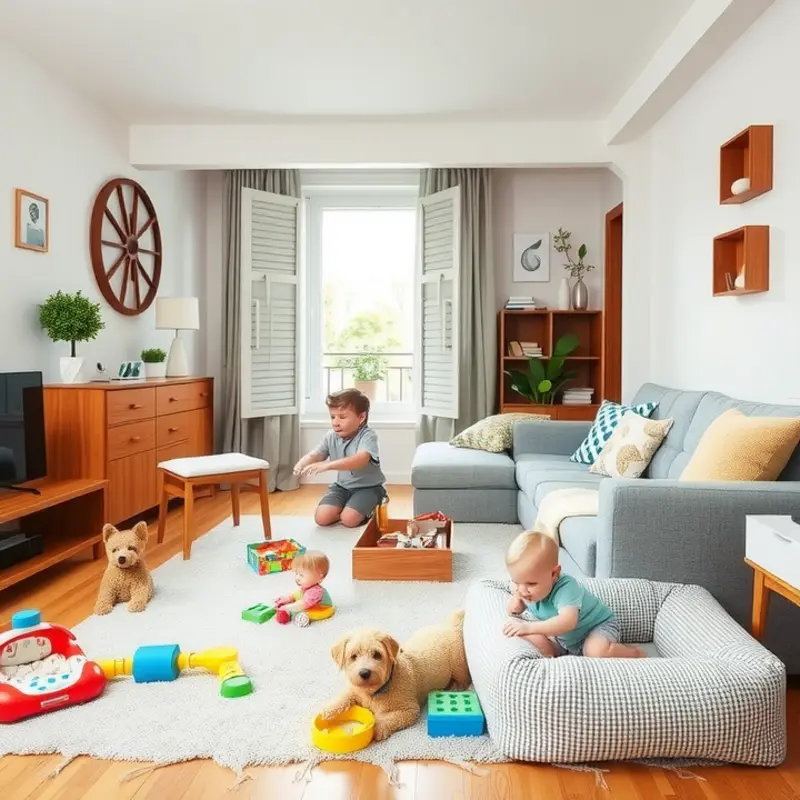Finding the perfect apartment is an exciting yet daunting task for families, pet owners, and couples looking for a safe and comfortable space. As you prioritize features like space for your children and furry friends, understanding the financial responsibilities involved with your new home becomes equally essential. Among these considerations are pet deposits and pet rent, two varying approaches landlords use to accommodate pets in rental properties. As more families embrace pet ownership, knowing the differences between these options helps you make informed decisions. Whether you’re a first-time renter or relocating to a new community, this guide will walk you through the key aspects of pet deposits versus pet rent, helping you align your family’s needs with your budget while ensuring a welcoming environment for everyone.
Understanding Pet Deposits

Pet deposits are a common aspect of renting for pet owners. They serve as a financial safeguard for landlords against potential damage caused by animals. Knowing how they operate and what they entail can save both money and stress during your lease period.
A pet deposit is a one-time fee paid at the start of your lease. It is intended to cover any possible damages your pet may cause, such as scratches, stains, or odors that go beyond normal wear and tear. Typically, this deposit ranges from $200 to $500, depending on the rental market and the property owner’s policies.
Before signing a lease, evaluate the pet deposit terms carefully. Some landlords offer refundable deposits if no damage occurs, allowing for recovery of these funds at lease end. Others might use the deposit purely as a fee, non-refundable regardless of any issues. Clarifying these terms can prevent misunderstandings later.
When considering a new place, factor in the pet deposit within your moving budget. The initial costs of relocation can be substantial, so accounting for this deposit beforehand avoids unpleasant surprises. Additionally, understanding the potential for refund impacts how this deposit fits into your long-term financial planning.
Landlords require pet deposits to mitigate risks associated with renting to pet owners. Pets can inadvertently cause damage, leading to expensive repairs. A pet deposit assures landlords that funds are available for necessary fixes, incentivizing them to welcome pet owners.
Despite their intention to protect property, pet deposits can influence your rental experience positively or negatively. On one hand, a fair deposit system promotes accountability and responsibility. On the other, excessive or non-refundable deposits can strain finances and tenant relations.
For those seeking transparency, inquire about what specific damages the deposit covers and how assessments are made. Understanding what constitutes damage requiring compensation aids in maintaining your property responsibly.
While pet deposits are standard in many rental agreements, they’re often accompanied by other costs like pet rent. This recurring charge is distinct from deposits, designed to cover added wear on shared spaces and facilities. Be sure to differentiate these expenses to gauge the full impact on your budget.
For more tips on balancing rental terms with family needs, visit our guide on kid-friendly apartment amenities. This resource offers insights into creating a harmonious environment suited for both children and pets within rental constraints.
Exploring Pet Rent

Pet rent represents an evolving trend in rental agreements, focusing on how pet ownership affects property maintenance and tenant dynamics. Typically defined as a recurring monthly fee, pet rent offers landlords an ongoing financial contribution that reflects potential increased wear and tear associated with having pets on the premises.
The inclusion of pet rent provides several advantages, particularly in terms of cash flow and predictable income for property owners. For tenants, pet rent often comes with a more manageable upfront cost compared to the larger, one-time deposit. This can be especially beneficial in helping families and individuals distribute their expenses more evenly across months, rather than having to budget for substantial lump-sum payments at the lease’s start.
A notable difference between pet rent and a pet deposit is the nature of the payment itself. While a pet deposit is typically refundable, contingent on the condition of the unit upon departure, pet rent is generally non-refundable and part of the monthly rental obligation. This can impact overall financial planning; with pet rent, the cost of pet ownership is an ongoing factor in your monthly budget, much like utilities or groceries.
From a lease perspective, pet rent can simplify financial obligations as it blends seamlessly into the monthly rental structure. This approach prevents the need for tenants to find additional funds upfront, potentially removing a barrier for renters looking to move in with pets. For families who prioritize control over recurring expenses, pet rent offers predictability, which can be essential for long-term household budgeting.
Conversely, if you plan to stay in your rental for an extended period, pet rent could accumulate to a significant sum that surpasses the typical pet deposit amount. Therefore, it’s important to consider the duration of your tenancy when evaluating which option is more financially sound. A higher monthly rent might also influence your ability to save or allocate funds elsewhere.
When deciding between pet rent and deposits, understanding the market norms of your locality is beneficial. Some regions might lean more heavily towards pet deposits or enforce limits on the amount landlords can charge, affecting your choice. Exploring community guides or consulting local rental experts can offer valuable insights. For instance, considering tips for negotiating rent in your area might uncover good alternatives or concessions that align with your financial plan.
Ultimately, the decision hinges on your household’s unique financial landscape, the duration of your stay, and how these fees integrate into your broader financial strategy. Balancing up-front savings with long-term costs requires careful consideration, where both your immediate financial capabilities and long-term goals weigh equally in the decision-making scale.
Final words
Choosing between pet deposits and pet rent can significantly impact your rental experience. By understanding the intricacies of each approach, you can not only plan your budget more effectively but also ensure your new home is a happy and nurturing space for both your children and pets. As you embark on your apartment search, remember to have open discussions with landlords about their pet policies. Comfort, safety, and affordability should be your guiding principles, ensuring a seamless transition for your entire family—furry members included. Happy apartment hunting!









